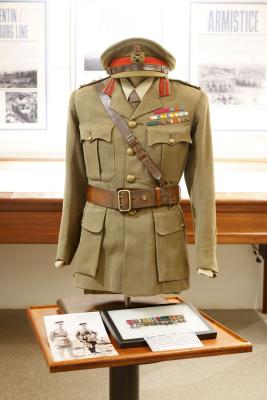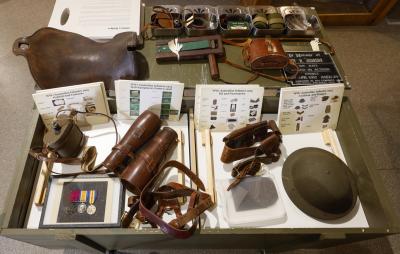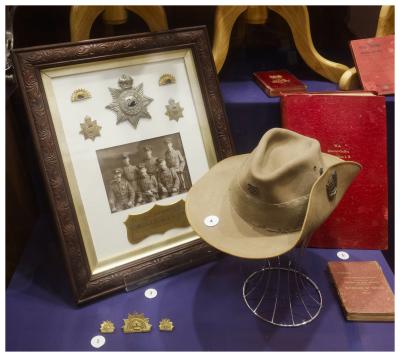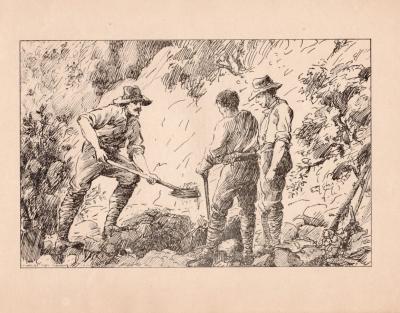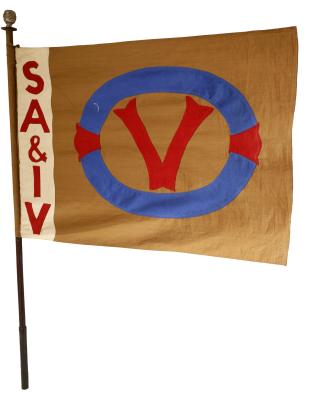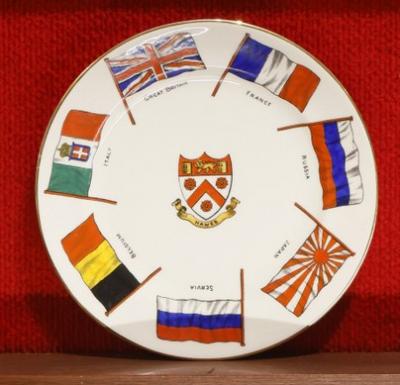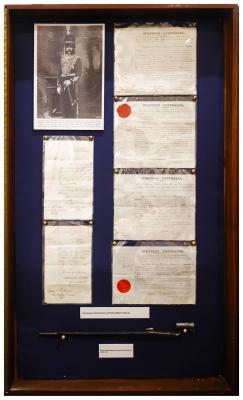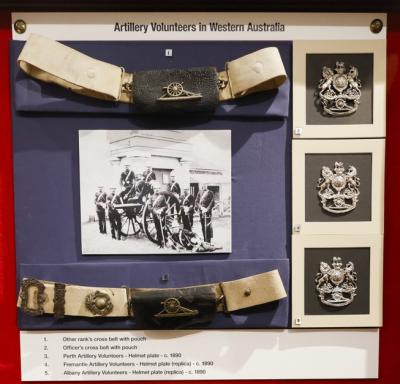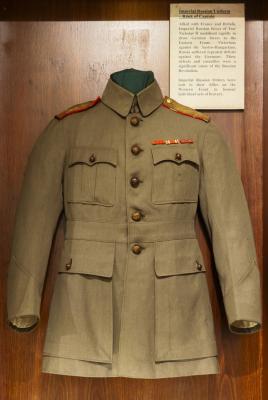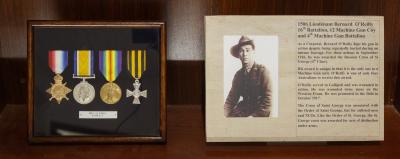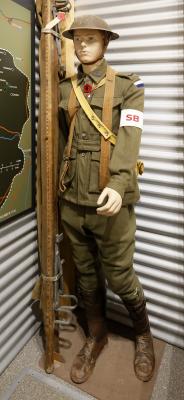World War 1, Nurses and Wounded Diorama, France, 1918
Two mannequins illustrating a battlefield scene from October 1918 on the Western Front. A German prisoner of war is guiding a mustard gas blinded digger from the Regimental Aid Station back to the Field Ambulance
As a chemical weapon, mustard gas was first used in World War I, and has been used in several armed conflicts since then, including the Iran–Iraq War, Mustard agents can be deployed by means of artillery shells, aerial bombs, rockets, or by spraying from aircraft.
Mustard gases have powerful blistering effects on victims. They are also carcinogenic and mutagenic alkylating agents. Their high lipophilicity accelerates their absorption into the body. Because mustard agents often do not elicit immediate symptoms, contaminated areas may appear normal. Within 24 hours of exposure, victims experience intense itching and skin irritation. If this irritation goes untreated, blisters filled with pus can form wherever the agent contacted the skin.[4] As chemical burns, these are severely debilitating. If the victim's eyes were exposed, then they become sore, starting with conjunctivitis (also known as pink eye), after which the eyelids swell, resulting in temporary blindness. Extreme ocular exposure to mustard gas vapors may result in corneal ulceration, anterior chamber scarring, and neovascularization
Details
Details
Because of the hazards, German POWs acting as stretcher bearers were allowed to wear their helmets and retain their respirators (gas masks). The use of prisoners of war as stretcher bearers was a permitted activity under the deneva Conventions.
At the Australian Army Museum of Western Australia, the story of stretcher bearers and the medical evacuation chain is presented in a series 0f exhibits in the World War 1 Gallery.
Australian Army Museum of Western Australia
Australian Army Museum of Western Australia
Other items from Australian Army Museum of Western Australia
- Inter War, Jacket, Belt, Hat and Miniature Medals, HOBBS, 1930
- World War 1, Gallery Cart, Hands-On Area
- Pre 1914, Hats, Kahki Fur Felt - Slouch Hat, 1912
- World War 1, South-West Asia, Turkiye, Gallipoli, Anzac Cove, SILAS, "Crusading at Anzac"
- Pre 1914, Flag of South Africa & Imperial Veterans
- World War 1, Goss Souvenir Plate, 1916
- Pre 1914, Commission Scrolls of William Edward Hayes
- World War 1, Height Measurement Guage, 1914
- Pre 1914, Volunteer Artillery Cross Belts and Helmet Plates
- World War 1, Russian Military Tunic. 1914
- World war 1, Medal Group, 1506 O'REILLY, 16 Battalion and 4 Machine Gun Battalion AIF
- Mannequin Display - Stretcher Bearer, Western Front, 1916
